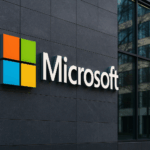ASML Holding, based in Veldhoven, successfully achieved the upper limit of its financial forecasts for the second quarter of 2025. Known for producing chip-making machinery, the company witnessed remarkable growth in its net sales and income compared to the previous quarter. The company’s impressive financial results, despite geopolitical and economic challenges, highlight its ability to maintain a strong position in the semiconductor sector. These results can be attributed to strategic enhancements in its EUV technology and a continuous dedication to market-responsive innovation.
ASML’s strategy appears consistent with its 2025 quarterly performance trends, where it has frequently surpassed its financial projections due to technology advancements and capturing new market opportunities. Historically, ASML has been resilient in adjusting to market needs, a trait that remains evident in its current report. However, unlike past reports, recent data reveals a more cautious financial outlook associated with macroeconomic uncertainties, distinct from previous confident projections.
How Did ASML Perform in Q2?
ASML recorded net sales of €7.7 billion, a step ahead of their previous forecasts between €7.2 billion and €7.7 billion. The company’s gross margin reached 53.7%, which exceeded expectations due to the successful upgrade of existing technology and reduced costs. Christophe Fouquet, ASML’s President and CEO, underscored this achievement, emphasizing the company’s capacity to hit the uppermost targets of its guidance.
“Our second-quarter total net sales came in at €7.7 billion, at the top end of our guidance,” said Fouquet.
What Are ASML’s Future Plans?
Looking to the next quarter, ASML estimates its net sales between €7.4 billion and €7.9 billion, with gross margins slightly lower, between 50% and 52%. Continued investment and expansion in research and development remain central to ASML’s growth strategy. Fouquet highlighted expectations of a 15% increase in full-year 2025 net sales, although revised down slightly from previous guidance.
Shareholder Payouts and Stock Movements
The company has announced a dividend of €1.84 per ordinary share for the second quarter. Furthermore, ASML repurchased approximately 2.3 million shares, equating to about €1.4 billion. Despite these positive movements, ASML’s shares saw a decline following Fouquet’s comments on increased uncertainties surrounding 2026 growth prospects.
“While we prepare for growth in 2026, we cannot confirm it at this stage,” Fouquet remarked. This uncertainty in future growth is stirring investor concerns, reflecting broader challenges faced by the semiconductor industry due to global trade dynamics.
ASML continues to see opportunities fueled by burgeoning investments in AI data centers, even as geopolitical tensions present challenges. Fouquet noted strong fundamentals in AI customer demand, underlining a pivotal driver for future revenue streams. However, tariff policies and their potential implications pose a risk to the company’s future operations.
On the technological front, ASML announced noteworthy advancements in its EUV systems, specifically the NXE:3800 systems. These new technologies enable 37% higher productivity compared to earlier models, directly benefiting DRAM production efficiency. The Dutch firm also steps forward in High NA lithography with the new EXE:5200 system, poised to boost chip production capabilities.
Recent technological progress aligns with ASML’s strategic focus on sustaining its market leadership in lithography innovation. These advancements underscore the existing investment in upgrading platforms and developing new tools like the NXT:2100 immersion tool, promising elevated productivity in chip-making processes.
Given ASML’s demonstrated technological advancements, it remains focused on balancing growth amidst external economic pressures. Their efforts in enhancing EUV and DUV platforms place them favorably within the evolving semiconductor landscape. The noted uptake in AI-related demand further supports ASML’s market position, indicating a cautiously optimistic outlook. While uncertainties cloud future projections, ASML’s commitment to innovation continues to drive its market strategy.










